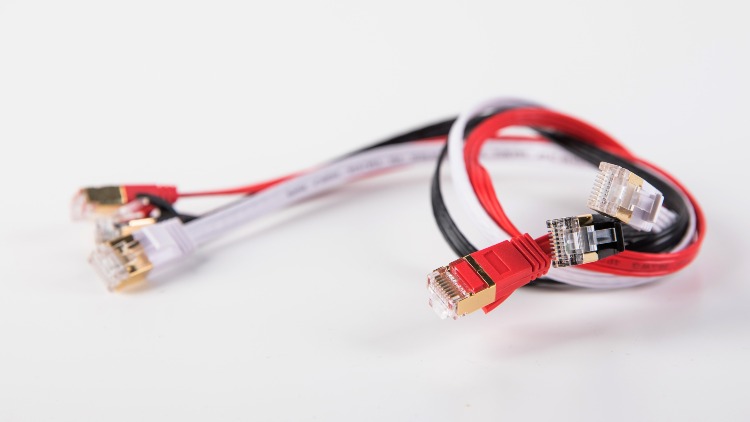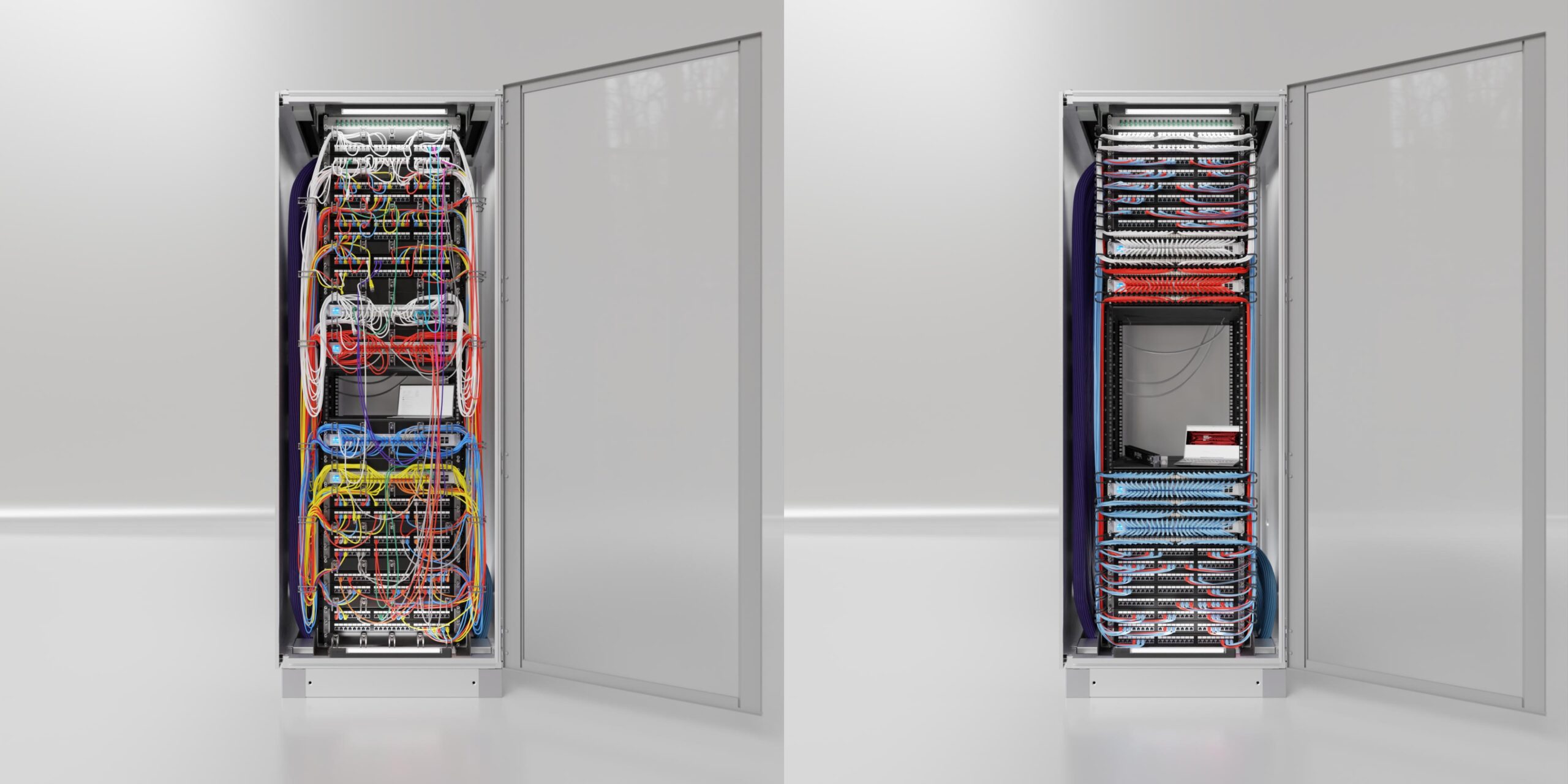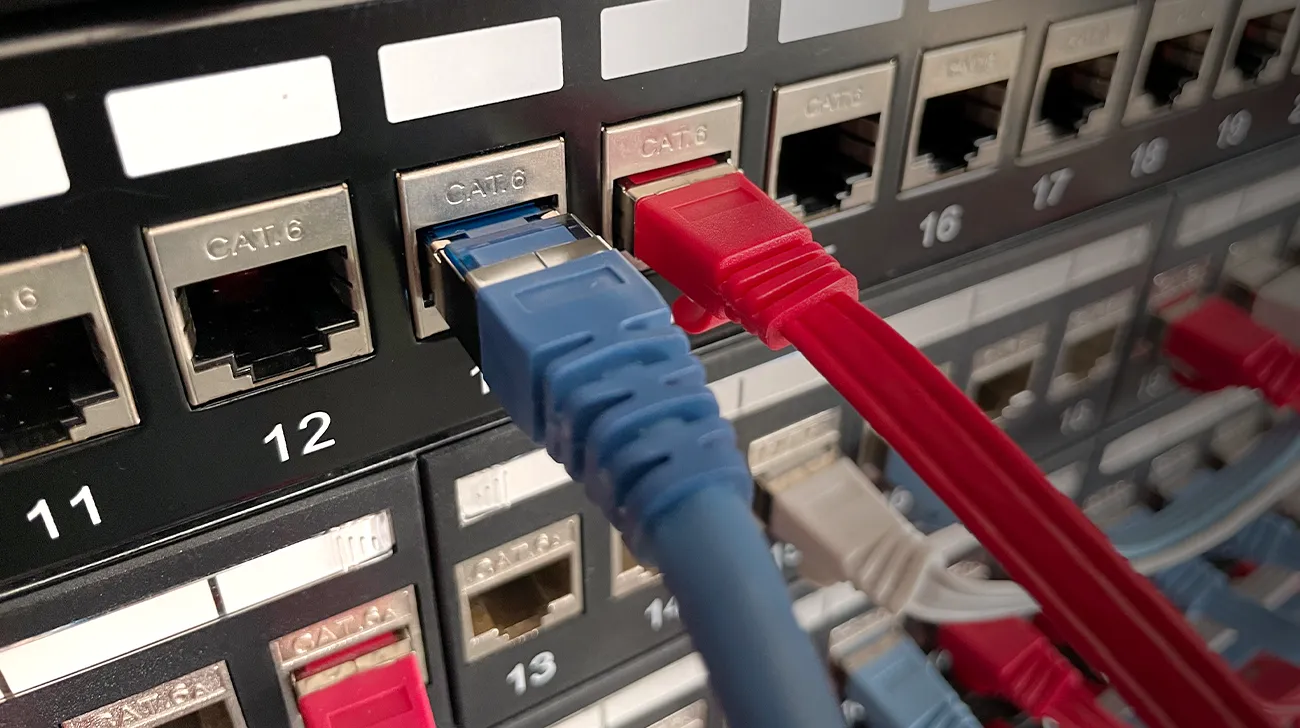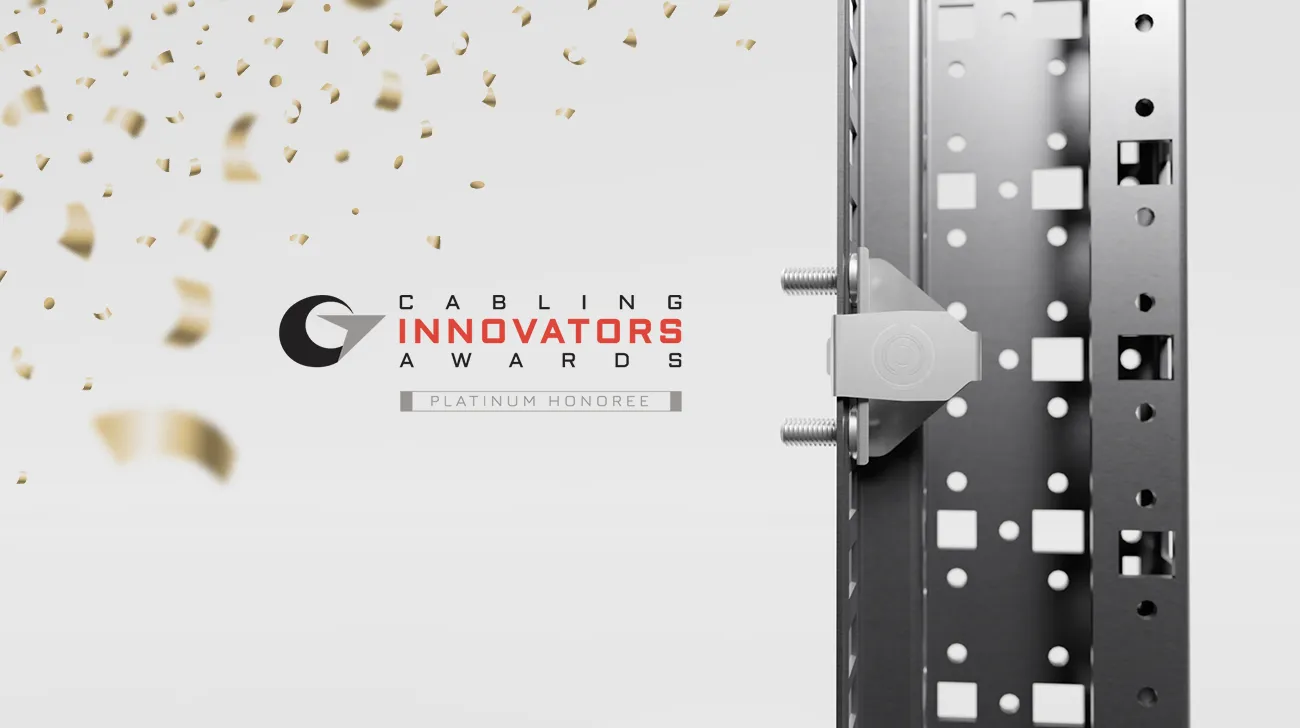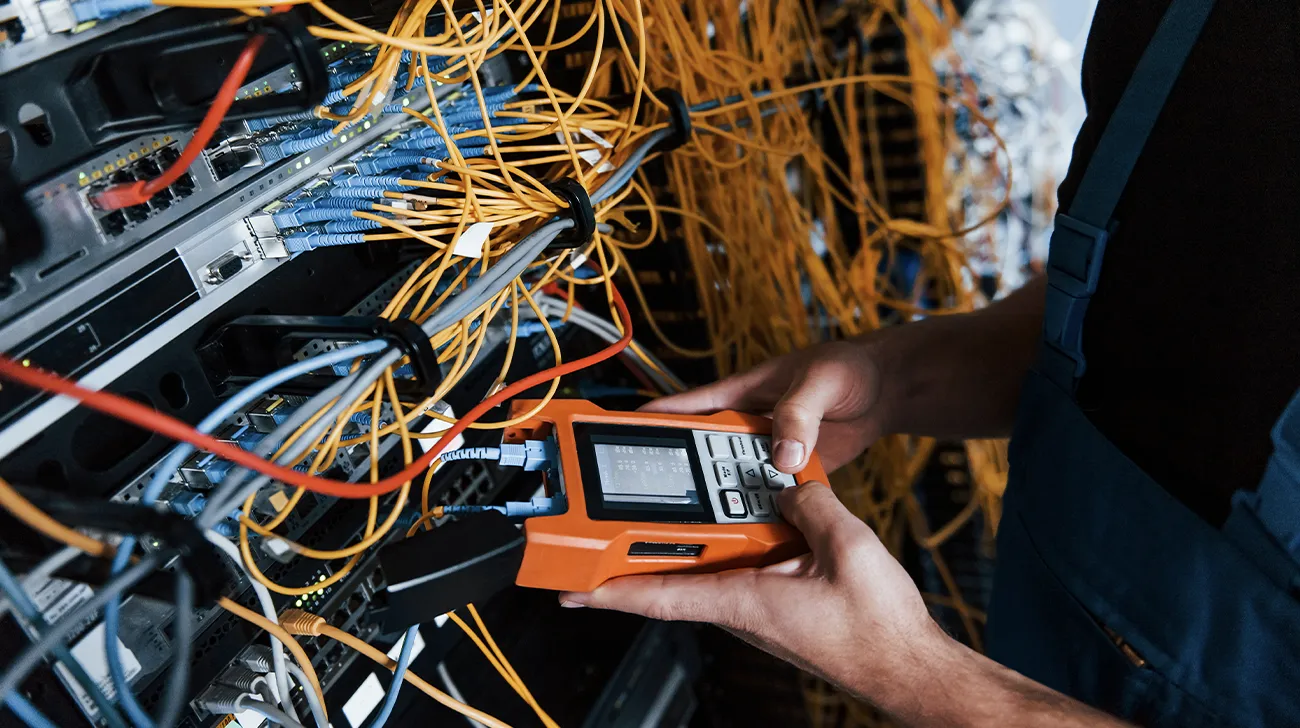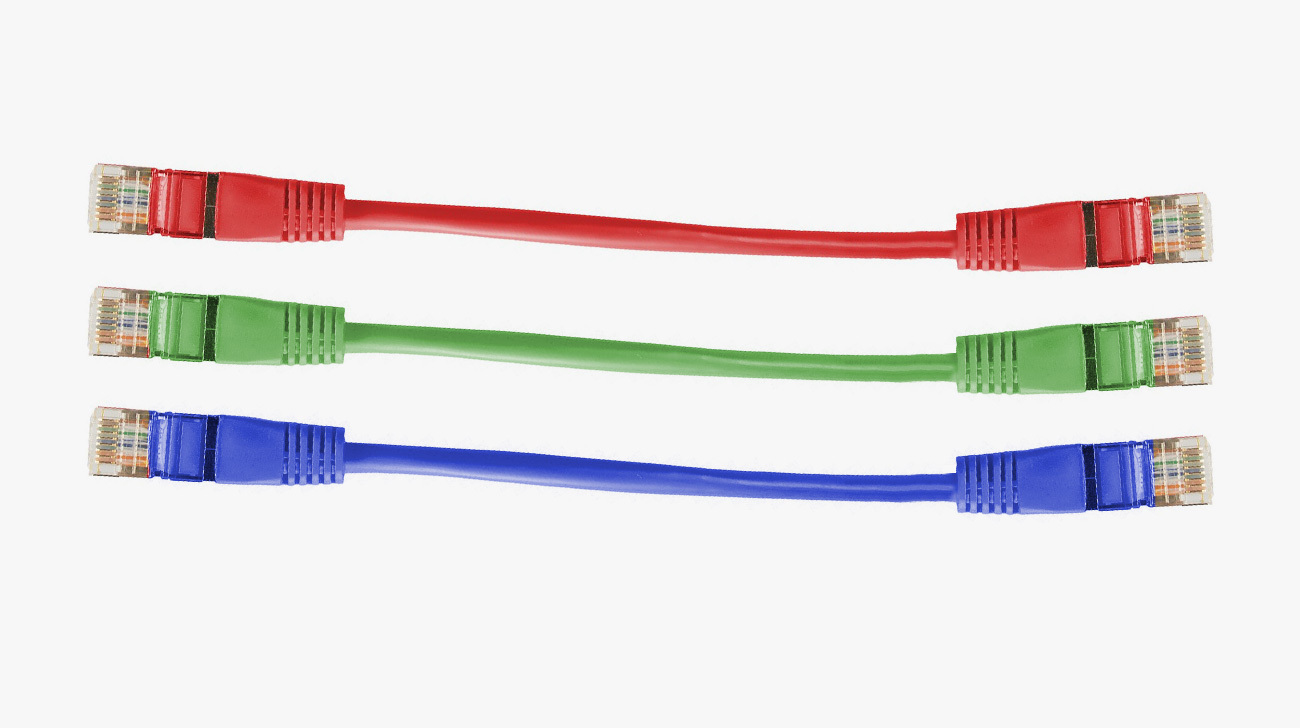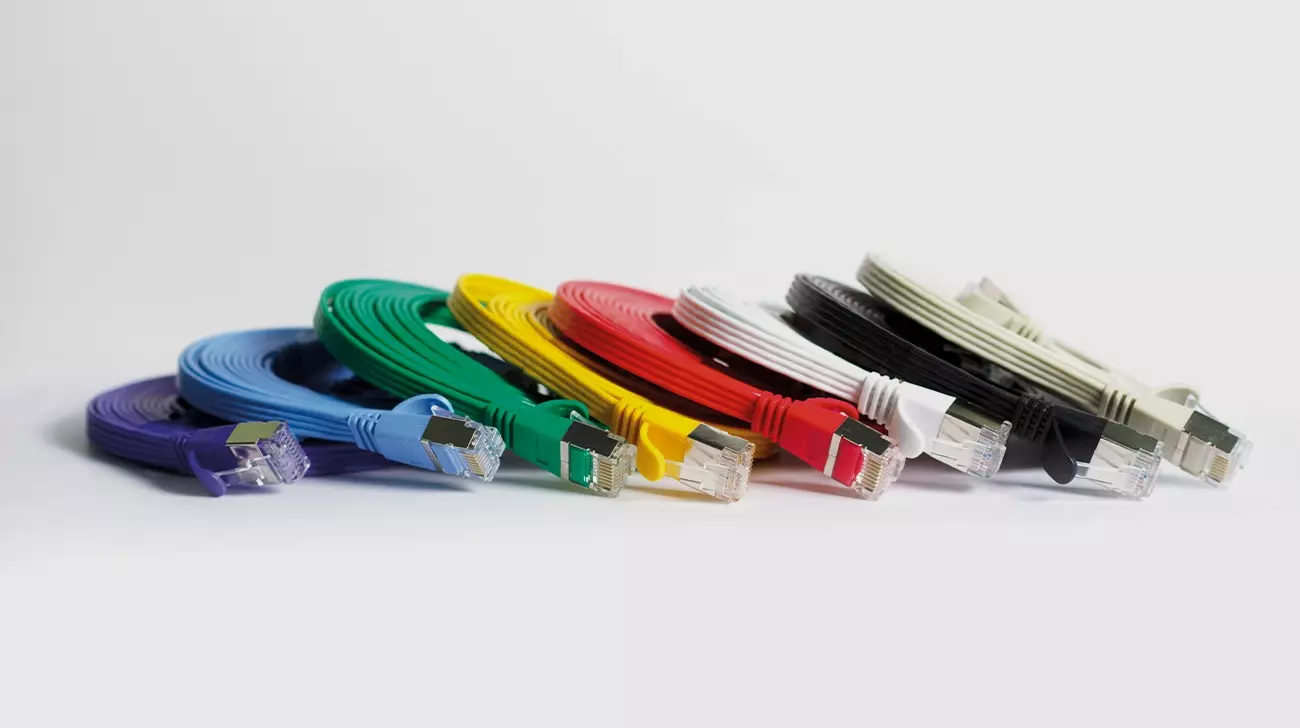Not only fans of our PATCHBOX® are wondering whether they should go with the UTP cable or STP patch cables version. Therefore, in our blog post we want to explain what the difference between Unshielded Twisted Pair and Shielded Twisted Pair is, where these cables are used and which one probably suits you best.
What is UTP?
UTP stands for Unshielded Twisted Pair, unshielded cable made from simple copper wires, like those found in telephone lines and network racks.
What is STP?
STP, on the other hand, stands for Shielded Twisted Pair – shielded cables with twisted pairs of wires. The cables are shielded from interfering factors with wire meshes and foils.
UTP vs. STP? Which patch cable do I need?
There are only a few specific cases where an STP is needed. This is usually to protect against high-level interference that can come from electromagnetic fields, power lines, and even radar systems. These are not one of the standard network situations, so STP cables are usually used in network closets in the specific situations mentioned.
STP: More popular in data centers
Until a few years ago, practically only the German-speaking world used shielded STP copper data cables in IT networks. The rest of the world relied on the cheaper and more installation-friendly unshielded UTP copper technology.
Today, copper connections that can transmit data rates of up to 40 GBit/s are standardized for data centers. Only shielded cabling components have been specified worldwide for this purpose.
This is a revolution. The entire unshielded world will have to deal with the issue of shielding in the future! – But it’s not quite that bad, because it only affects data centers. Here, preassembled cable trunks are often used.
Please your OCD with perfect Cable Management
Where are UTP cables used?
In the LAN, 1 Gigabytes/sec connections (class E/category 6) on the floor are often perfectly adequate. State-of-the-art LANs also use class EA / category 6A. These connections are suitable for 10 Gigabit Ethernet. Only a few power users need this today. The server and switch connections for the user ports and end devices are also Class E / Category 6 or Class EA / Category 6A. All these Ethernet links can be implemented in UTP technology.
In addition, there are recently TCP/IP-based gateways and controllers for building automation as well as Industrial Ethernet controllers in the manufacturing sector. Here, even class D/category 5 routes are often sufficient. However, the electromagnetic environment should also be considered. Nearby large machines, noticeable transmission interference can occur even with shielded connections.
UTP vs. STP Network cables: The difference between unshielded twisted pair and shielded twisted pair
Shielded network cables, also called shielded-twisted-pair or STP cables, contain an electrically conductive aluminum foil, a metal-vaporized foil or a metal braid. Unshielded data cables, also called unshielded twisted pair or UTP cables, do without. The international standard ISO/IEC-11801 (2002)E designates these as U/UTP components.
In UTP cables, the jacket and its mechanical equipment alone protect the four twisted pairs inside from outside influences.
UTP cables up to category 6 are comparatively simple in design and correspondingly slim and flexible. This is particularly advantageous for installations with high packing density. The specified transmission frequency here is 100 MHz. Here, the electromagnetic influences between the cables do not play a serious role. For this reason, network managers worldwide mainly choose unshielded copper cables for category 6 components. They are cheaper and easier to handle than STP cables.
UTP vs. STP: The advantages and disadvantages of shielding
STP cables contain a metallic shield that protects the signal transmission in the cable from electromagnetic interference from outside. In addition, the shielding does not allow any signal components of the cable to penetrate to the outside. The signals can thus be transmitted in the cable without external influence and do not interfere with neighboring transmissions. This reduces the bit error rate and the number of rejected defective Ethernet packets and results in high transmission rates.
The disadvantages of STP technology are the higher price and the greater installation effort. Here, for example, the installer must connect the shielding in the IT rack properly to prevent dangerous leakage currents. When field-terminating connectors, he must ensure 360° shielding throughout. That costs time.
With UTP up to 10 Gigabit Ethernet
Many network operators accept these disadvantages when they want to design their network for 10 Gigabit Ethernet. This is the first Ethernet standard that actively uses all four wire pairs of the cable for signal transmission, and this pushes UTP technology to its limits.
10 Gigabit Ethernet can be transmitted at 500 MHz with Class EA copper cabling and Category 6A components. Unshielded technology is also specified for this, but its advantages are dwindling. To ensure that the signal of one twisted pair does not influence the neighboring one, unshielded category 6A cables have a larger diameter for round cables, but this also makes them bulkier and heavier to handle – easier to handle and much more bend-friendly are flat ethernet cables, which we also use in our PATCHBOX.
This allows unshielded cables to achieve the same cross-sections as shielded cables. This has an effect on the patch level: Here, category 6A-U/UTP installations require larger distances than before. In addition, the cables are no longer necessarily less expensive than shielded cables.
All this makes it easier to switch to shielded technology when designing the network for 10 Gigabit Ethernet. However, this is not the end of the story. Because ISO/IEC-11801 (2002)E specifies numerous shield variants for Ethernet cables, which are divided into two categories: Cables with overall shielding and those with pair shielding.
Copper data cable with overall shield
Many STP network cables have an electrically conductive overall shield between the sheath and twisted pairs. In this case, an aluminum-vaporized, electrically conductive plastic foil, an aluminum foil or a wire braid is attached around the entire conductor bundle in the cable. Some cables even contain foil and braid. ISO/IEC-11801 specifies the following designations for the different variants: S/UTP (braid), F/UTP (foil), SF/UTP (braid and foil). The first letter designates the shielding material of the overall shield. In these cases, the four transmitting wire pairs inside do not receive any further shielding and are therefore referred to as “UTP”.
Ideal for 10 Gigabit Ethernet: Cables with pair shielding
Pair shielding is particularly useful for cabling for 10 Gigabit Ethernet transmissions. Here, each pair of wires is wrapped with an aluminum-vaporized plastic foil or an aluminum foil. This ensures that the transmitted signals of a wire pair are not disturbed by signals from neighboring wire pairs. These cables are also called PiMf cables, where PiMF stands for pair in metal foil. If the cable also has an overall shield and is designed for frequencies up to 2000 MHz, it corresponds to categories 8.1 and 8.2. Data center operators can use them for transmissions of 25 and 40 Gigabit Ethernet over distances of up to 30 meters.
Here are the correct designations according to ISO/IEC-11801:
U/FTP (without overall shield), S/FTP (braid), F/FTP (foil) and SF/FTP (braid and foil).
UTP vs. STP: Which is better?
U/FTP installation cables are available in the same way as Category 6E U/UTP cables with a diameter of AWG 23. With the thin shielding foil, they are at least as flexible as unshielded cables with filler cores and separators made of plastic, and they do not cost more. At the same time, the foil shield around the wire pairs ensures good electrical insulation.
Whoever makes the choice here must weigh up the simpler installation with UTP against the probably somewhat better transmission quality of the U/FTP cable. When laying UTP cables, there is also the fact that the operator must generally maintain a large distance from supply cables here. With shielded cables, a separator plate is sufficient. For data rates above 10 GBit/s, only shielded copper technology or fiber optics come into question.
Regardless of the decision, our PATCHBOX is the ideal solution for the patch level. It allows you to organize patch management in a clear and space-saving way. It is available in UTP, STP and fiber optic versions. We equip it for you with flexible, extremely space-saving U/UTP or U/FTP or fiber optic ribbon cables.
Shielding Variations for Twisted Pair Cables
| Unshielded | – | U/UTP |
| Overall Shield | Braid (S) | S/UTP S/FTP SF/FTP |
| Overall Shield | Foil (F) | F/UTP F/FTP SF/FTP |
| Pair Shielding | Foil (F) | U/STP F/STP SF/STP |
BU: The international standard for cabling in information technology ISO/IEC 11801 specifies nine shield variants in addition to U/UTP cabling.
Whether UTP or STP: PATCHBOX® got you covered!
We offer our PATCHBOX® 365 as well as our PATCHBOX® Plus+ with UTP and with STP – so you can design your rack as you like and also use the cables of your choice.
